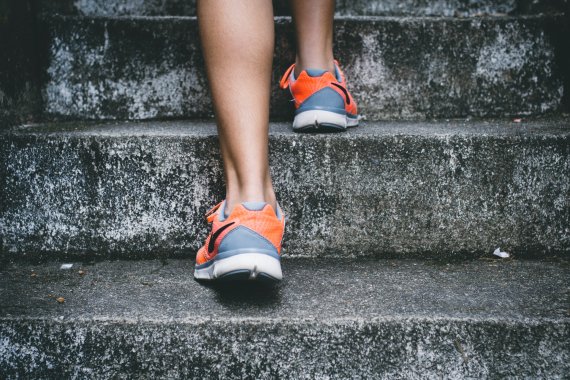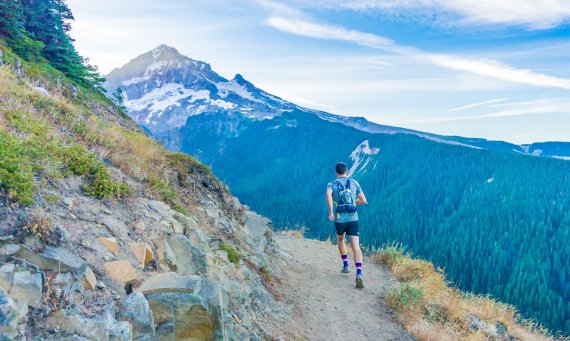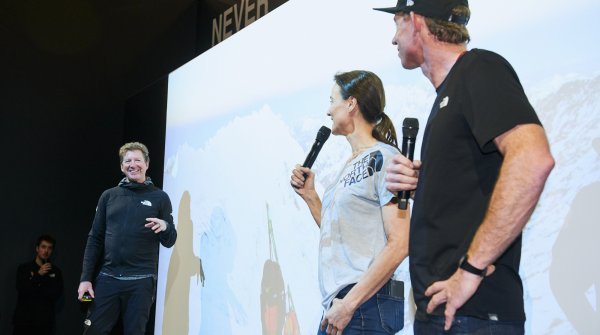
Millions of Germans run and jog more or less regularly. No wonder, the endurance sport needs neither equipment nor preparation. Nevertheless, the muscles and musculoskeletal system are strengthened and fat burning is boosted. For running you need, above all, suitable running shoes - these should be chosen carefully for the sake of health and the heavily stressed ligaments and tendons.
Just discovered running for himself, is faced with the difficult decision for the right shoe. The right model can only be found if various factors are taken into account. Therefore, a consultation in a specialist shop is recommended, for which you should take enough time.
When buying running shoes, the first thing to determine is what running style the customer has, i.e. whether one tends to land on the front part of the foot, the midfoot or the heel when running and then rolls off. It is best to have a motion analysis done on the treadmill. Based on these results, the salesperson can offer specific models.
To analyse the running behaviour, it is also advantageous to have the old, worn-out shoes with you. Their soles allow the specialist to draw conclusions about the running behaviour. Equally important for the fitting are running socks and, if used, orthopaedic sports insoles. Basically, any foot malpositions - for example problems with bent, hollow or splay feet - should be addressed offensively.
In addition to individual factors such as height, weight and gender of the runner, the average planned running distance and the frequency of training are also important for the shoe selection. In addition, the usual running route - more precisely: the hard or soft surface - has an influence on the choice of shoes in terms of cushioning and stability. Especially if the ground is hard or you are overweight, it is advisable that the shoes are well cushioned. For off-road running on unpaved trails, stability is crucial.
As a general rule, only choose as much cushioning as necessary. A trend - especially for experienced runners - are flat models that come close to natural barefoot running and place massive demands on the muscles in the feet and calves. Particularly strong stability and cushioning in running shoes always means restricting the foot's freedom of movement.

A running shoe should definitely provide enough toe room to avoid blisters and pressure points as the feet thicken while running. As a rule of thumb, about a thumb's width of space in front of the longest toe is recommended. This also explains why running shoes should be chosen larger than the usual street shoes.
In the heel area, the shoe must fit well to avoid slipping out as well as irritation of the Achilles tendon. The shoe for running should provide good support not only in length but also in width. There are different models for men and women.
Ultimately, trying on both (!) shoes determines whether the foot and shoe fit together and whether you feel comfortable. This should be the deciding factor for the purchase. Because the feet swell slightly during the day, it is best to buy shoes in the second half of the day.
A good running shoe is a worthwhile investment in your own health, which definitely has its price. Apart from purely fashionable aspects, however, it doesn't have to be the latest model. Last season's shoes or other discontinued models are just as suitable for running - so if you don't necessarily want to be up to date, you can save considerably here without compromising on quality.

 OutDoor by ISPOOutDoor in transition
OutDoor by ISPOOutDoor in transition
- Awards
- Mountain sports
- Bike
- Fitness
- Health
- ISPO Munich
- Running
- Brands
- Sustainability
- Olympia
- OutDoor
- Promotion
- Sports Business
- Textrends
- Triathlon
- Water sports
- Winter sports
- eSports
- SportsTech
- OutDoor by ISPO
- Heroes
- Transformation
- Sport Fashion
- Urban Culture
- Challenges of a CEO
- Trade fairs
- Sports
- Find the Balance
- Product reviews
- Newsletter Exclusive Area
- Magazine




